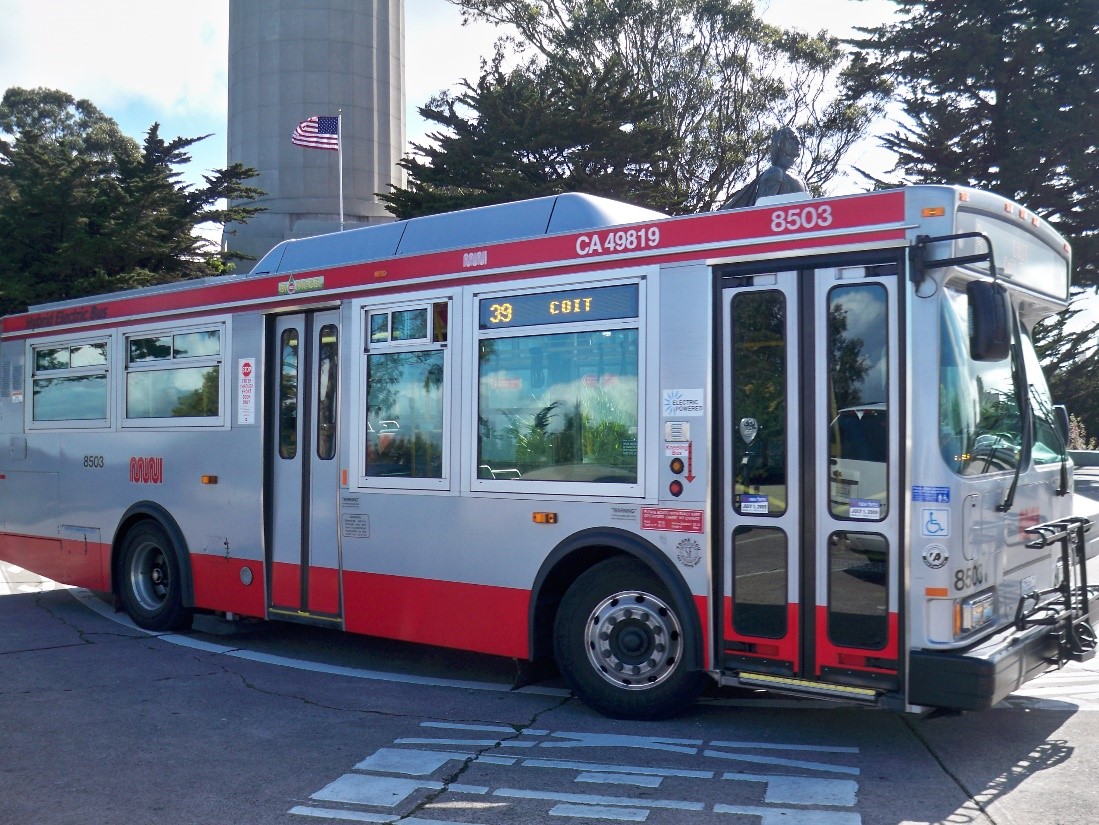By Clive Tsuma

San Francisco’s first low-emissions electric hybrid Orion bus
Muni’s Orion hybrid buses are headed for retirement as we phase in a brand-new batch of El Dorado hybrid electric buses. It’s the end of an era for San Francisco’s first low-emissions electric hybrid fleet that travels the city’s toughest routes.
Orion hybrid fleet tackles Muni’s toughest routes starting in 2007
The Orion buses have been a testament to the SFMTA’s commitment to the latest green transportation technologies. Muni, which previously had relied on a diesel bus fleet in coordination with our electric trolley bus fleet, transitioned to its first 30-foot Orion diesel hybrid-electric buses in 2007. This was the start of the SFMTA’s addition of these lower emission vehicles to one of the greenest fleets in the country, ensuring better air quality city wide.
The Orions brought the agency closer to achieving its goal of an all-electric fleet and a carbon-neutral San Francisco by 2040. This is consistent with San Francisco’s Climate Action Plan to dramatically reduce harmful emissions in communities.
The Orions’ pint size made them ideal for winding routes like the 36 Teresita, which weaves through Twin Peaks, Diamond Heights, Glen Park and Bernal Heights. Many riders have taken Orions on their adventures along San Francisco’s curving streets, steep hills and tight turns. One can only imagine their sentimental value, especially among those who frequent the 36, as well as the 35 Eureka, 37 Corbett, 39 Coit and 56 Rutland routes.
The Orions were among the first low-floor hybrid buses to serve San Francisco, and the first with closed-circuit security cameras to help keep Muni riders safe. Their interior was fitted with internal destination signs to help customers know when their stop was approaching. The 30-foot coaches were designed to accommodate easier boarding and provide quieter, more efficient operation.
Their arrival offered us an opportunity to train Muni mechanics on hybrid vehicle maintenance. The agency continued to maintain the fleet even after the Orions’ assembly manufacturer went under in 2012.
The new El Dorados are primed to fill the gap left by their predecessors. Like the Orions, they are low-floor buses with a short wheelbase, making them ideal for navigating San Francisco.
As their taillights fade into the horizon, the Orion hybrid bus fleet takes a much-deserved place in the history of San Francisco transit. They conquered the winding hills of Glen Park and navigated the twisting turns of Telegraph Hill. They will be remembered as the first of Muni’s fleet to pioneer hybrid batteries, moving Muni closer to a zero emissions future.
Published April 26, 2023 at 12:30AM
https://ift.tt/wXEMeGr
Comments